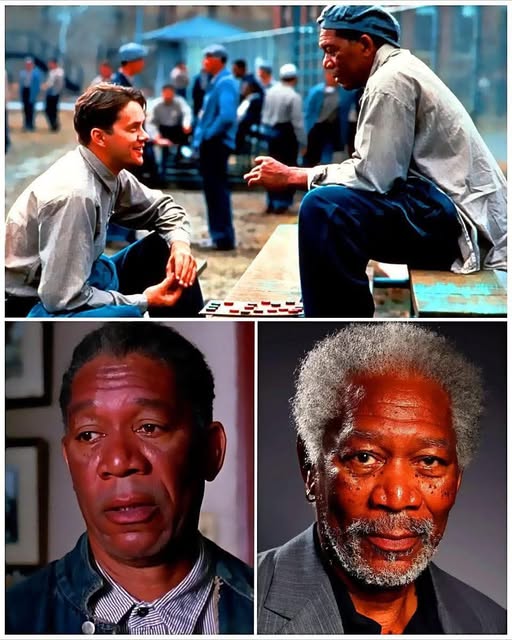
During the filming of a key scene in “The Shawshank Redemption” (1994), Morgan Freeman spent an unbroken nine hours throwing a baseball as Ellis Boyd “Red” Redding. It wasn’t staged for action or athleticism. It was a quiet, emotional moment, Red chatting with Andy Dufresne in the prison yard, a symbol of their deepening friendship. But the scene demanded dozens of takes from multiple angles, and Freeman, known for his calm presence, kept tossing the ball again and again. The crew didn’t realize what it was costing him.
The next day, Freeman walked onto set with his arm in a sling. It was only then that everyone learned he had seriously injured his shoulder and had not told anyone. Director Frank Darabont recalled, “Morgan never said a word. Only the next day, he showed up with his arm in a sling.” The silence did not come from pride. It came from a place of deep commitment to the story, the moment, and the team around him. He knew stopping production would affect the schedule and cost the production dearly. So, he kept throwing.
Freeman, who was 56 during the filming of “The Shawshank Redemption” in 1993, had already built a reputation as one of Hollywood’s most respected actors. His performances in “Driving Miss Daisy” (1989), “Glory” (1989), and “Lean on Me” (1989) had shown audiences his range and sensitivity. What unfolded during that baseball scene offered the crew a firsthand glimpse at something beyond talent: his endurance, humility, and willingness to put the work ahead of his own comfort.
The injury was not minor. According to a crew member, Freeman’s shoulder was visibly swollen by the end of the day. Yet he made no request to adjust the scene or reshoot with a double. He simply powered through. The injury was never publicized. There were no interviews about it, no press releases. He did not want sympathy, and he certainly did not want attention for it.
Cinematographer Roger Deakins, who captured that yard scene with his signature subtlety and natural lighting, later mentioned how Freeman’s physical pain didn’t show in the footage. “What you see on camera is all Morgan,” Deakins said. “There’s a grace to his movement, even when he was hurting. It’s a quiet kind of toughness.”
Darabont, deeply moved by Freeman’s gesture, remembered how the actor never made demands. “Morgan was the kind of guy who made the set feel grounded. He brought calm when things got hectic. And the day he showed up with that sling, there was a kind of silence, not from guilt or shock, but from respect.”
Freeman’s co-star Tim Robbins, who played Andy, later reflected on that day with admiration. “We all knew Morgan was dedicated, but that made it clear how much he cared about every detail. He was in pain, and none of us even noticed until the next day. That tells you who he is.”
Behind Freeman’s quiet endurance was a deeper philosophy he carried throughout his career, the belief that an actor is in service of the story. That belief guided every take, every line, and every subtle gesture in “The Shawshank Redemption” (1994). It is why Red’s character felt lived-in, believable, and deeply human. Freeman did not merely perform the role; he lived it, even through pain.
He never asked for acknowledgment. But the people who saw that moment never forgot it. And for those who admire his work on screen, that day on the prison yard is a reminder that greatness often comes not with noise, but with quiet, relentless commitment.
In nine hours of quiet pain, Morgan Freeman showed more about character than a script ever could.
Credits to respective owner
